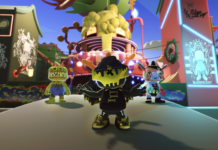The transition from PC to consoles has been difficult for the strategy genre. Even with the mountains that the genre has to climb, it hasn’t stopped from developers from attempting their best at finding the happy middle ground to satisfy controller-friendly consoles. Ubisoft is ready to tackle the obstacles head on with R.U.S.E. for the Xbox 360 and PlayStation 3.
Upon initial impressions, R.U.S.E. presents itself as overly simple that it may come off as a barebones. For the most part, players make use of the four face buttons and the D-Pad for the controls, so the uncomplicated controls pave way for user-friendly playthroughs. As ever-inviting as it may be, don’t let the button-mapping fool you; the further players advance in R.U.S.E. the more complex the missions will become. Sure, the first few missions are only 10-15 minutes long, but as soon as the game frees the player from the binding of the hidden tutorial of sorts, that’s when the challenges soon begin.

Mission objectives are spelled out with crayons – take over castle, defend city, eliminate tanks, etc. – so Ubisoft and Eugen Systems have certainly did their best to keep players moving along in R.U.S.E. Providing bonus objectives that are often timed, players should be enticed to complete their goals in record time for not only better experience points at the end of the level, but for general satisfaction of accomplishing the difficult assignments set before them.
Each mission provides players with experience points that are based on the primary and secondary objectives, time it took to complete, the survival of their units, enemy elimination score, and the difficulty that the title was played on. Before the end of mission three where I was tasked to defend the Kasserine Pass, I was already leveled up to six and was overcoming the odds in record time. That isn’t to say that the opposition was never a challenge, but R.U.S.E. offers a certain comfort with the controls that never represent themselves as foreign, unresponsive or misguided.

Perhaps the most unique aspect of R.U.S.E. is being able to pull back the camera to see the entire map as if it were a war table. Playing as Major Sheridan, players are able to zoom in and out at their own leisure to get a close-up of the combat or strategize moves from afar. Presenting units as if they were stacked poker chips, it was often more intriguing to guide units from the drawn back view. On the other hand, the combat often required for individual units to be placed at specific points to defend a particular area, so flipping back and forth was a necessity to coordinate precise attacks.
Unfortunately, the presentation wasn’t as spruced up as I would’ve preferred. The menus were hard to look at, the all-CG videos offer characters that look as if they were created out of Play Doh, and the load times were atrocious. We can only cross our fingers that the preview build isn’t evidence of the final product as it’s hard to overlook the blandness of R.U.S.E.
Set for a September 17 release, R.U.S.E. should stroke the fire within strategy fans.










